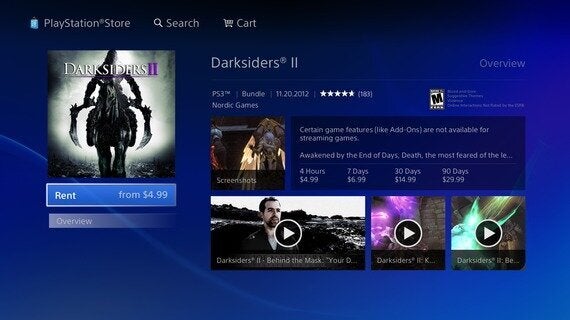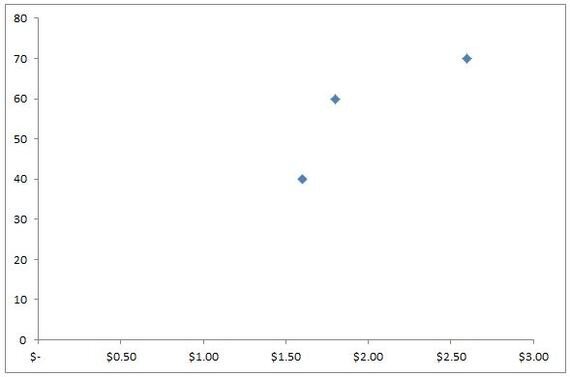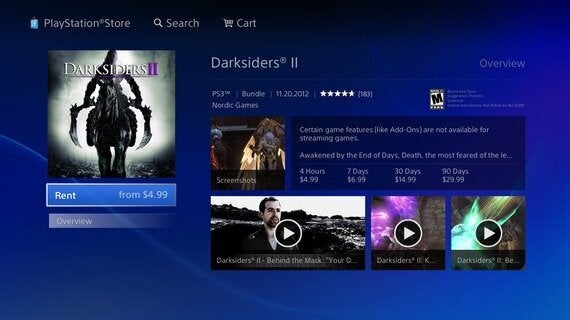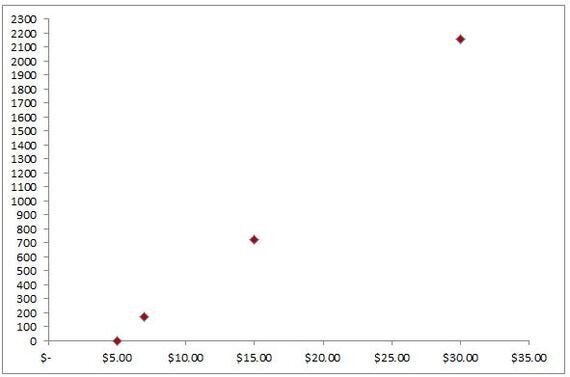Sony recently launched its new Playstation Now service that lets you rent access to streaming games. Technically I know they're saying it's still in beta, but they're taking your money and giving you a product. That's "launched." Prices vary by game, but they always follow the same structure. Take, for example, Darksiders II:

Those prices are:
- 4 hours for4.99
- 7 days for6.99
- 30 days for14.99
- 90 days for29.99
You may look at those options and be baffled as to why Sony would even include the "4 hours for $4.99 option." Four hours? There are very few games that can be fully experienced in just four hours, and Darksiders II is definitely not one of them. For just two more dollars you can get the game for 7 days --that's 164 additional hours. So why even have a 4 hour option that nobody is going to pick?
Well, I'll tell you why. But first we're going to have to talk about beer. Yaaaaay! Beer!
Back in 1983, Joel Huber and Christopher Puto, both from Duke University at the time, asked a bunch of students to pick a six-pack of beer from a set of choices. One group had these options:
- A bargain beer that cost1.80 and had been rated a 50 out of 100 on quality
- A premium beer that cost2.60 and had been rated a 70 out of 100
Given these two options, only 33% chose the bargain beer.
Another group of identical students, though, was asked to pick from three options: the first two of which were the same as above, plus what Huber and Puto called a "distractor" option. So their choices were:
- A cheap, nasty beer that cost1.60 and had been rated a 40 out of 100 on quality
- A bargain beer that cost1.80 and had been rated a 50 out of 100
- A premium beer that cost2.60 and had been rated a 70 out of 100
Here's how those choices look in plot form:

What happened when that third distractor was added? Nobody wanted the nasty beer, but simply having there made choice of the bargain beer rise from 33% to 47%.
In other words, the presence of the worthless decoy stole market share from the premium beer and gave it to the bargain beer.
Psychologists studying consumer choice call this an "attraction effect." It happens when one choice dominates another by being mostly similar to it, but better on at least one important aspect. The reason, as usual, is because of how our brains are wired. We simply aren't very good at evaluating things in absolute terms, like the value of having access to a game for a certain amount of time relative to how much it will cost. Instead, we are biased towards making comparisons between things that are most similar and ignoring or devaluing other choices for the sake of simplicity. The third choice --the premium beer for in the example avove-- gets undervalued for the sake of making the decision simpler.
As you're probably guessing at this point, the PlayStation Now pricing structure also uses a decoy to trigger the attraction effect. Look again at Darksiders II, which is currently priced thusly:

Granted, PlayStation Now prices vary by game, but they all follow the same pattern. The Dark Siders II options look like this on a plot, which has # hours on the Y axis:

Similar to the beer sipping subjects in Huber and Puto's study, we would expect shoppers to see that the 4 hours for $5 option is dominated by the 168 hours for $7. Thus people are more likely to limit their choice to those two options because it's less mentally taxing and requires less wrestling with abstract concepts like value. And thus we should see an attraction effect where the presence of the 4 hour option causes more people to choose the 7 day option than if there were no decoy.
Why would Sony want people to go for the 7 day option? Maybe they have data showing that it's the sweet spot where people are more willing to pay, or they're likely to spend more over time if they do it in $7-ish chunks. Maybe they think customers are unlikely to rent multiple games at once, and they don't want them tied up for 30 or 90 days at a time with one game.
But whatever their reasons, now you know about the psychology involved and you can make a more informed choice.
REFERENCES
Huber, J. and Puto, C. (1983). Market Boundaries and Product Choice: Illustrating Attraction and Substitition Effects. Jounral of Consumer Research, 10(1), 31-44.
[Jamie Madigan writes about the overlap between psychology and video games. Check out more at Psychologyofgames.com or follow him on Twitter.]